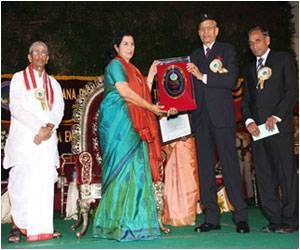"International and national investment in HIV treatment scale-up have yielded concrete and measurable results. We cannot let this momentum wane. Now is the time to redouble our efforts, and save many more lives."- Margaret Chan, Director General, WHO.
World AIDS Day which falls on December 1st, 2010, is an opportune time to increase awareness, improve funding, tackle prejudice, step-up education, and activate prevention measures with special attention on countries with high prevalence of HIV-AIDS. The day seeks to refresh our collective memories about the presence of the scourge amongst us and is a reckoner of what remains to be done to reduce its incidence.The main goal of World AIDS Day 2010 campaign is to improve universal access and accord basic rights to HIV victims while also giving an impetus to prevention, treatment, care and support for HIV victims. This sentiment is stamped on the theme of World Aids Day 2010 - ‘'Universal Access and Human Rights”.
Statistics
• According to latest statistics from UNAIDS, 33.3 million people are battling HIV worldwide, of which 2.5 million are children.
• Majority of HIV victims belong to lower and middle-income countries.
• 50% of victims are youth; statistics show that most do not live beyond 10 years following diagnosis.
• Despite the awareness about protection before sex, 60% female sex workers in China do not use condoms with clients.
AIDS Prevention Programmes
AIDS prevention programmes have made their mark and have helped reduce the rate of new infections by 17% in eight years. The challenge still remains to tackle the number of people living with the infection which has unfortunately risen by 20%.
Sub-Saharan Africa appears to be the worst affected with 71% of new HIV infections. Rate of new infections have also shown an upward trend in parts of Central Asia and Eastern Europe; the blessing is that the AIDS epidemic has stabilized with lesser incidences of new infections in most regions.
Asia still remains a challenge with respect to HIV-control. It comes second to Sub-Saharan Africa in the number of HIV victims. What is most alarming is that, half of Asia’s HIV victims are from India. The main reason for the spread of HIV in Asia is sexual transmission. Rightly, a survey placed sex workers in the high risk category for HIV, as close to 14.5 % of female sex workers are victims of HIV.
Key Focus Areas
Today victims of HIV receive much better care and services; yet, one-third of countries worldwide need to get their act together to step-up protection measures against HIV. The main barriers to HIV services are stigma and discrimination against HIV victims.
Funds and the lack of it has been a grey area haunting AIDS initiatives. To take many of the national policies forward, funding needs to be improved and it is here that political leaders can go the extra mile to make a huge difference.
Access to HIV treatment needs improvement against the backdrop of new infections- the rate of new infection is 2.7 times faster than the numbers actually receiving treatment. Middle-income countries need to act fast as statistics show that only 31% of people actually receive treatment for HIV. A priority-based approach is need of the hour to spruce up services forsex workers, drug users, adolescents and women.
On World Aids Day, let us endeavor to stand up against stigma and discrimination surrounding HIV or AIDS. Let us become aware and spread that awareness about prevention, treatment, care and support for HIV/AIDS patients.
Sport the Red Ribbon, Spread the Message, Act Fast and Act Now to Save the World from HIV-AIDS!
Source-Medindia














